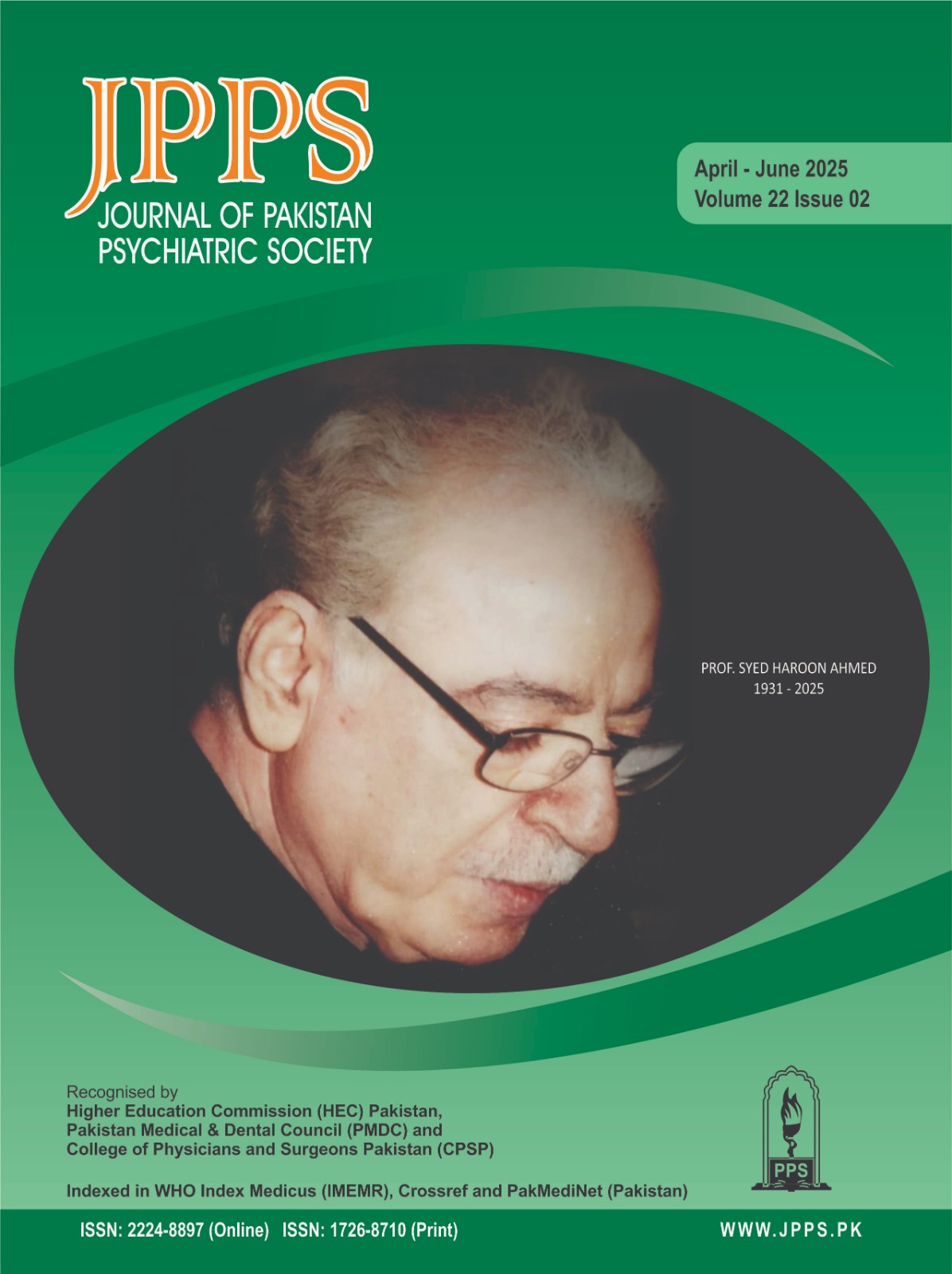FREQUENCY OF FACTORS RELATED TO NON ADHERENCE IN PATIENTS WITH SCHIZOPHRENIA PRESENTING TO PSYCHIATRY DEPARTMENT AT CIVIL HOSPITAL KARACHI.
Abstract
Objective: To determine the factors associated with non-adherence to antipsychotic medication among adult patients with schizophrenia.
Study design: Cross-sectional study
Place and duration of study: The study was conducted at the Department of Psychiatry, Dr. Ruth K.M. Pfau Civil Hospital, Karachi in a period of six months.
Methods: A total of 155 patients were recruited through consecutive sampling. Data on socio-demographic characteristics, clinical history and factors influencing non-adherence were collected using structured interviews.
Results: The mean age of participants was 40.67 ± 11.44 years, with 63.2% being male. Non-adherence to medication was observed in 77.4% of patients, with significant contributing factors including adverse drug effects (61.5%), stigma (42.3%) and financial barriers (46.2%).
Conclusion: Non-adherence to antipsychotic medications is alarmingly high among patients with schizophrenia in Pakistan, necessitating targeted interventions addressing economic, social and clinical challenges to improve adherence rates.
Keywords: Non-adherence, Schizophrenia, Antipsychotic medication, Factors, Pakistan.
Downloads
References
2. Insel TR. Rethinking schizophrenia. Nature. 2010;468(7321):187-193.
3. Higashi K, et al. Medication adherence in schizophrenia: factors influencing adherence and consequences of non-adherence. Patient Prefer Adherence. 2013;7:329-342.
4. Kane JM, et al. Comprehensive care in schizophrenia: addressing the challenge of treatment adherence. Clin Ther. 2013;35(2):118-122.
5. Velligan DI, et al. Strategies for addressing adherence problems in patients with serious and persistent mental illness. J Clin Psychiatry. 2010;71(9):1115-1124.
6. Javed A, et al. Mental health services and access in low-income and middle-income countries. Lancet Psychiatry. 2017;4(11):860-870.
7. Gater R, et al. Provision and accessibility of mental health services in low- and middle-income countries. World Psychiatry. 2015;14(2):123-131.
8. Ahmed S, et al. Financial burden and barriers to treatment in schizophrenia. Pak J Med Sci. 2020;36(2):205-210.
9. Lambert M, et al. Impact of side effects on antipsychotic adherence. CNS Drugs. 2004;18(8):541-558.
10. Corrigan PW, et al. Reducing stigma by supporting recovery in people with serious mental illness: a review. Psychiatr Serv. 2012;63(10):963-973.
11. Thornicroft G, et al. Reducing stigma and discrimination: candidate interventions. Int J Ment Health Syst. 2016;10:30.
12. Morisky DE, et al. The validity of a self-reported measure of medication adherence. Med Care. 1986;24(1):67-74.
13. Mubeen Z, Fatmi Z, Hameed W, Asim M. Barriers and facilitators to accessing adolescents’ mental health services in Karachi: users and providers perspectives. BMC Health Services Research. 2024 Feb 1;24(1):157.
14. Anastasia EA, Guzman LE, Bridges AJ. Barriers to integrated primary care and specialty mental health services: Perspectives from Latinx and non-Latinx White primary care patients. Educational Publishing Foundation; 2023.
15. World Health Organization. Policy options on mental health: a who-gulbenkian mental health platform collaboration.
Copyright (c) 2025 Journal of Pakistan Psychiatric Society

This work is licensed under a Creative Commons Attribution-NonCommercial 4.0 International License.
Copyright © JPPS. Published by Pakistan Psychiatric Society
Licensing: This work is licensed under Creative Commons Attribution-NonCommercial 4.0 International License
Readers may “Share-copy and redistribute the material in any medium or format” and “Adapt-remix, transform, and build upon the material”. The readers must give appropriate credit to the source of the material and indicate if changes were made to the material. Readers may not use the material for commercial purposes. The readers may not apply legal terms or technological measures that legally restrict others from doing anything the license permits.






.png)









